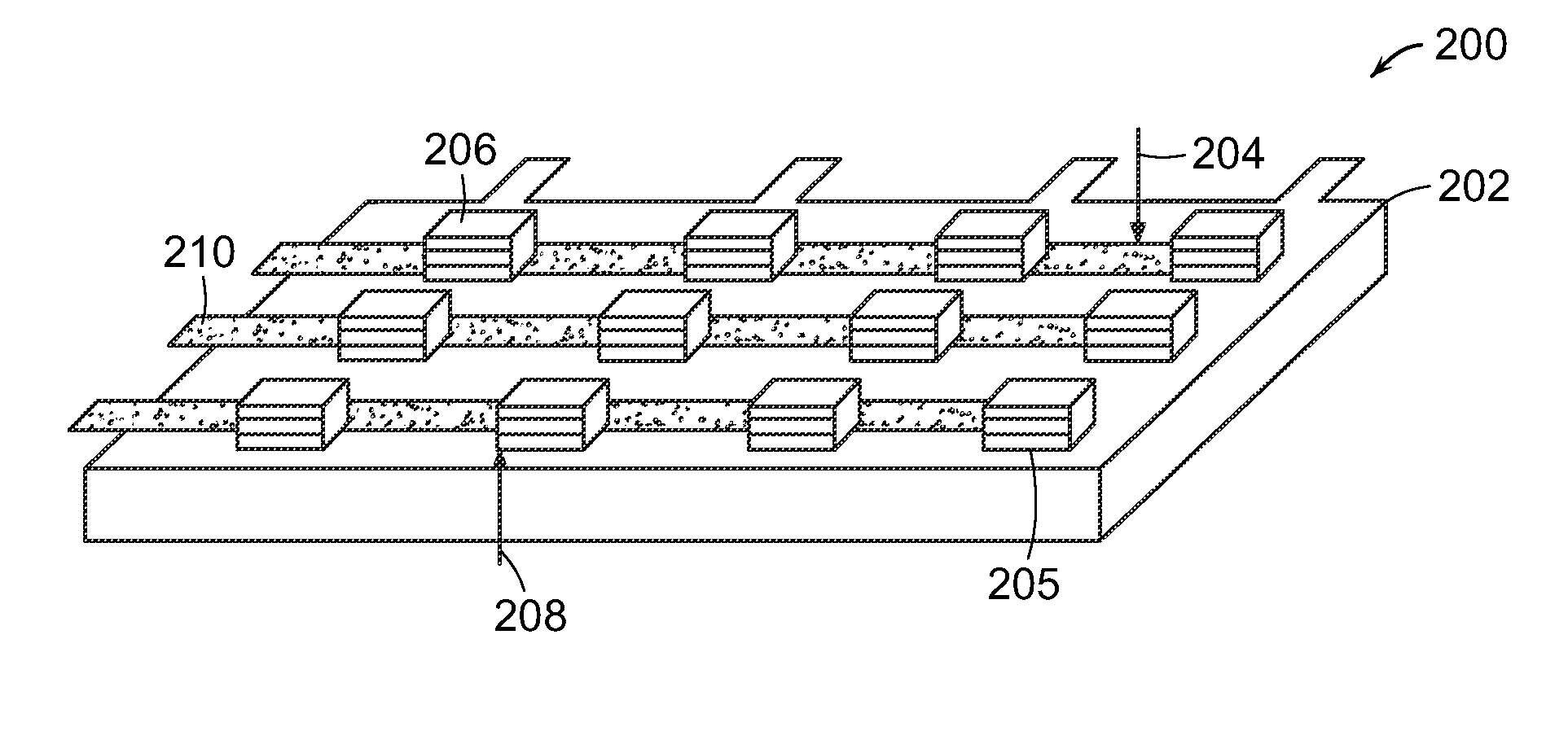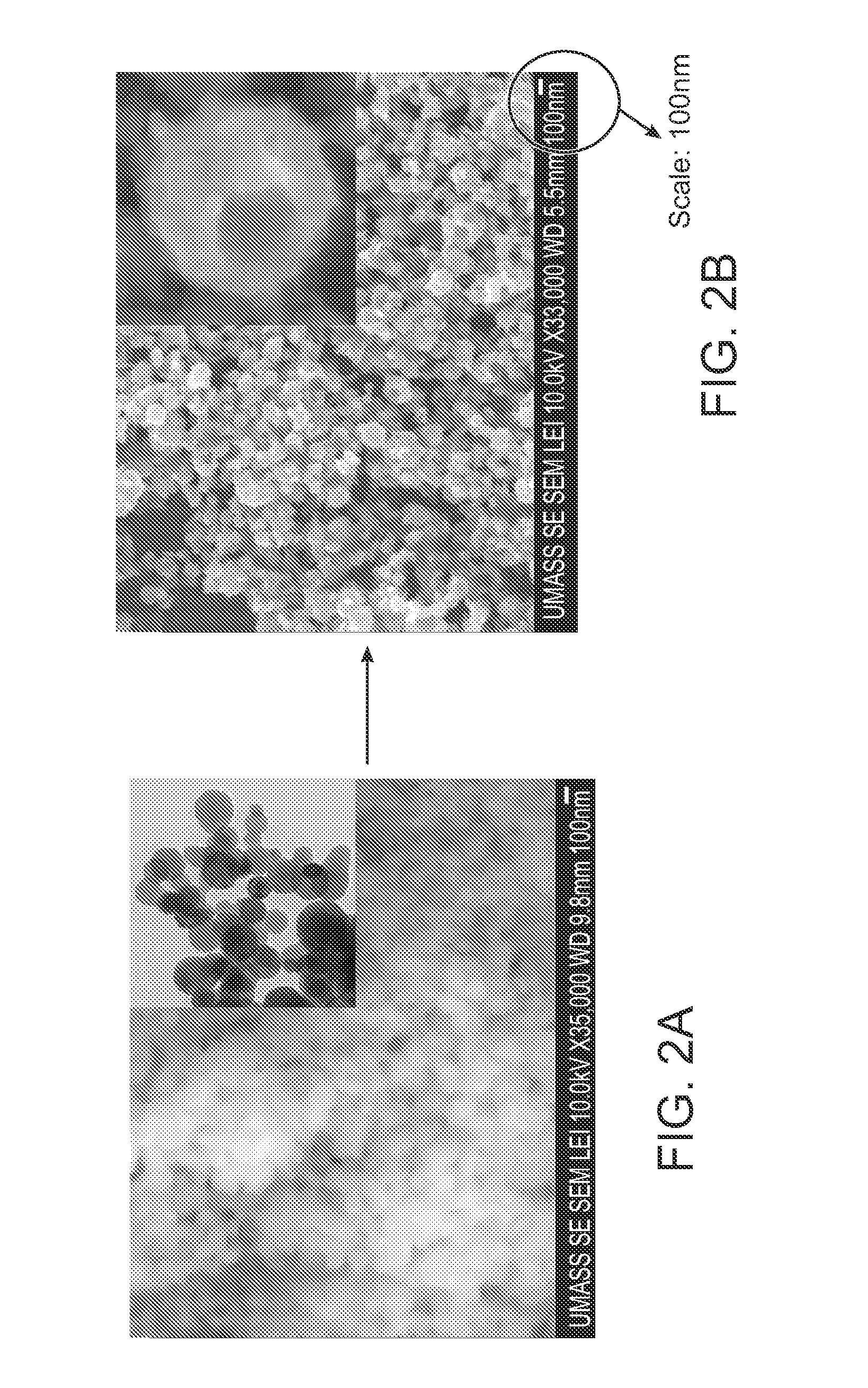Methods for the fabrication of nanostructures heating elements
a heating element and nanostructure technology, applied in nanotechnology, nanotechnology, thin material processing, etc., can solve the problems of difficult to achieve galvanic replacement reaction on non-inert metals, and achieve the effect of high yield and high volume production
- Summary
- Abstract
- Description
- Claims
- Application Information
AI Technical Summary
Benefits of technology
Problems solved by technology
Method used
Image
Examples
Embodiment Construction
[0059]This application claims the benefit of U.S. Provisional Application No. 61 / 160,534, filed Mar. 16, 2009, and U.S. Provisional Application No. 61 / 234,529, filed Aug. 17, 2009, the entire teachings of which are incorporated herein by reference.
[0060]Galvanic replacement reaction was performed in an inert gas-filled chamber such as a glove box. In a typical replacement reaction, a fixed amount of Al nanoparticle templates were placed in a solution dissolved with NiSO4, NH4Cl, and sodium citrate. The mixture was kept in the glove box to prevent an oxide layer from forming on the Al templates. Over time, the galvanic replacement reaction results in the Al being replaced by Ni (in this case) from the solution (aqueous). The resulting nanoparticles were separated and cleaned with nanopure water for 5 times and ethanol for 2 times by centrifuging at 3000-5000 rpm, and then dried in vacuum oven overnight. By controlling the replacement reaction parameters, different heterostructures ca...
PUM
| Property | Measurement | Unit |
|---|---|---|
| thickness | aaaaa | aaaaa |
| temperatures | aaaaa | aaaaa |
| temperatures | aaaaa | aaaaa |
Abstract
Description
Claims
Application Information
 Login to View More
Login to View More - R&D
- Intellectual Property
- Life Sciences
- Materials
- Tech Scout
- Unparalleled Data Quality
- Higher Quality Content
- 60% Fewer Hallucinations
Browse by: Latest US Patents, China's latest patents, Technical Efficacy Thesaurus, Application Domain, Technology Topic, Popular Technical Reports.
© 2025 PatSnap. All rights reserved.Legal|Privacy policy|Modern Slavery Act Transparency Statement|Sitemap|About US| Contact US: help@patsnap.com



